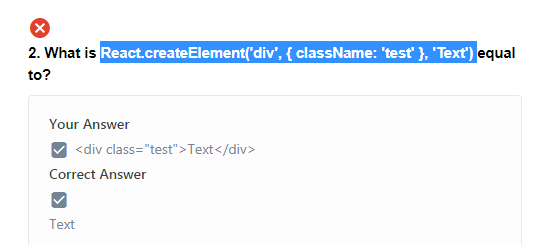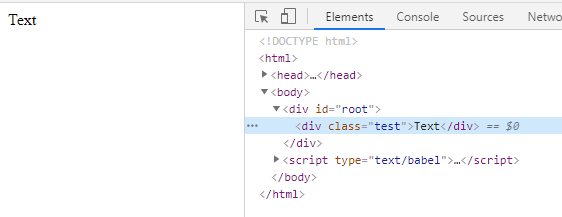My two ways:
<!DOCTYPE html>
<html>
<head>
<meta charset="UTF-8" />
<title>Hello World</title>
</head>
<body>
<script src="https://unpkg.com/react@16/umd/react.development.js" crossorigin></script>
<script src="https://unpkg.com/react-dom@16/umd/react-dom.development.js" crossorigin></script>
<script src="https://unpkg.com/babel-standalone@6/babel.min.js"></script>
<div id="root"></div>
<script type="text/babel">
class HelloMessage extends React.Component {
render() {
return (
<div>
Hello {this.props.name}
</div>
);
}
}
const names = ["Funky", " Grass"];
ReactDOM.render(<HelloMessage name = { names }/>,
document.getElementById('root')
);
</script>
</body>
</html>
and this is the second version:
<!DOCTYPE html>
<html>
<head>
<meta charset="UTF-8" />
<title>Hello World</title>
</head>
<body>
<script src="https://unpkg.com/react@16/umd/react.development.js" crossorigin></script>
<script src="https://unpkg.com/react-dom@16/umd/react-dom.development.js" crossorigin></script>
<script src="https://unpkg.com/babel-standalone@6/babel.min.js"></script>
<div id="root"></div>
<script type="text/babel">
class HelloMessage extends React.Component {
render() {
return (
<div>
Hello {this.props.name}
</div>
);
}
}
ReactDOM.render(
<div>
<HelloMessage name="Funky"/>,
<HelloMessage name="Grass"/>,
</div>,
document.getElementById('root')
);
</script>
</body>
</html>




